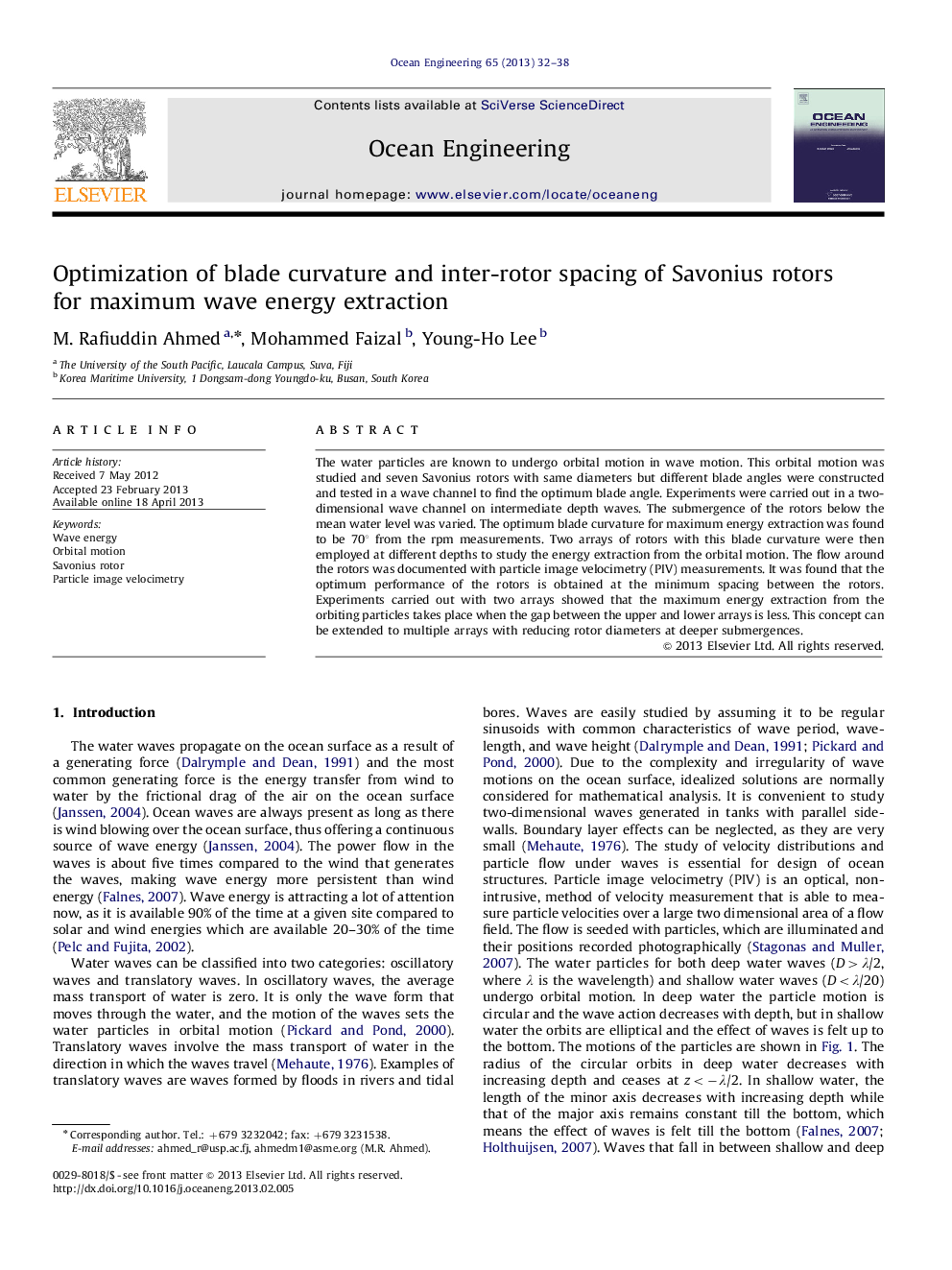| Article ID | Journal | Published Year | Pages | File Type |
|---|---|---|---|---|
| 1725914 | Ocean Engineering | 2013 | 7 Pages |
The water particles are known to undergo orbital motion in wave motion. This orbital motion was studied and seven Savonius rotors with same diameters but different blade angles were constructed and tested in a wave channel to find the optimum blade angle. Experiments were carried out in a two-dimensional wave channel on intermediate depth waves. The submergence of the rotors below the mean water level was varied. The optimum blade curvature for maximum energy extraction was found to be 70° from the rpm measurements. Two arrays of rotors with this blade curvature were then employed at different depths to study the energy extraction from the orbital motion. The flow around the rotors was documented with particle image velocimetry (PIV) measurements. It was found that the optimum performance of the rotors is obtained at the minimum spacing between the rotors. Experiments carried out with two arrays showed that the maximum energy extraction from the orbiting particles takes place when the gap between the upper and lower arrays is less. This concept can be extended to multiple arrays with reducing rotor diameters at deeper submergences.
► Particles undergoing orbital motion in water waves can drive Savonius rotors. ► Optimum blade angle was found from experiments in wave channel. ► Two arrays of rotors were tested for performance. ► Power can be extracted by employing multiple arrays of rotors.
